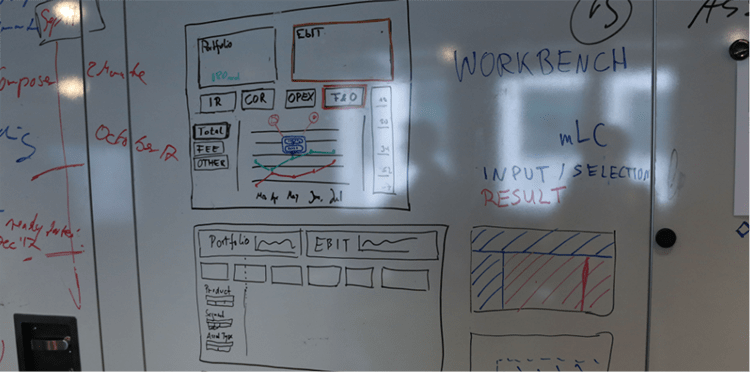How might we support the treasury departments to make accurate predictions in unpredictable markets?
- Client (Year): Automotive Bank (2017)
- AI/Tech: ML | Scenario Based Modeling
- Design: Design Sprint (Prototyping & Testing)
- Industry: Finance
Background
The automotive bank developed a prediction tool based on machine learning to predict the sale forecast for the treasury department. Past data and expert knowledge trained the algorithm. In the first pilot phase, the experts had the opportunity to adjust the values manually. Especially in emerging markets, the algorithm did not provide the most accurate results, as the political situation influences the markets more significantly than expected.
Situation
Many experts established their systems to analyze the markets. The adoption rate of the new prediction tool was not very high. Experts were afraid to be replaced by the algorithm and did not help to improve the results, and others were disappointed by the results.
Approach
The project encompassed a week-long workshop, ideation, and prototyping for a centralized sales forecasting tool. After a successfully delivered first phase, the design team was contacted a second time to target further tool development.
Together with my colleague Michael Engel, I conducted a short Design Sprint (3 days on-site and 5 days UX adjustments). Here I took the UX designer's role and helped prototype the concept ideas, which we tested remotely with global markets.
First, we defined issues on the data collection, the technical infrastructure, and the business side to understand the pressing topics and the next releases.
 Design Sprint with Michael Engel and client team
Design Sprint with Michael Engel and client team
First, we defined issues on the data collection, the technical infrastructure, and the business site to understand what are pressing topics and what needed to adjust for the next release.
UX design
 Sketches of different dashboard options
Sketches of different dashboard options
We sketched ideas on how to improve the application. One concern was how to design the software flexibly enough so that the users could adapt it to specific market needs. For example, smaller markets needed a more granular result than larger ones. Another concern was how to improve the result of the algorithm by expert knowledge, allowing them to correct the forecast.
User testing
 Timeboxing - testing schedule
Timeboxing - testing schedule
We tested the concepts with global experts on Skype. They gave us valuable feedback to carry on.
 We tested remote in five countries through Skype
We tested remote in five countries through Skype
After the workshop looked at familiar user-interaction patterns. The treasury experts typically work with MS Excel, and they are used to the editing functions. I created realistic prototypes using SketchApp, which tested features on how to include gamification and usability aspects. We tested familiar patterns from Excel vs. new editing options.

Project delivery
As a result, the client was able to focus their energy on implementation, with rich insights and a well-documented recommendation package. The finalized screens present the solution in an up-to-date aesthetics which seamlessly aligns with the branding guidelines.
First Design Sprint team:
Alex Wendpap* (Design), Uli Kaulfuss *(Moderation/Business), Susanne Feldt (remote design support)
Second Design Sprint:
Susanne Feldt (Design), Michael Engel (Moderation/Business)

